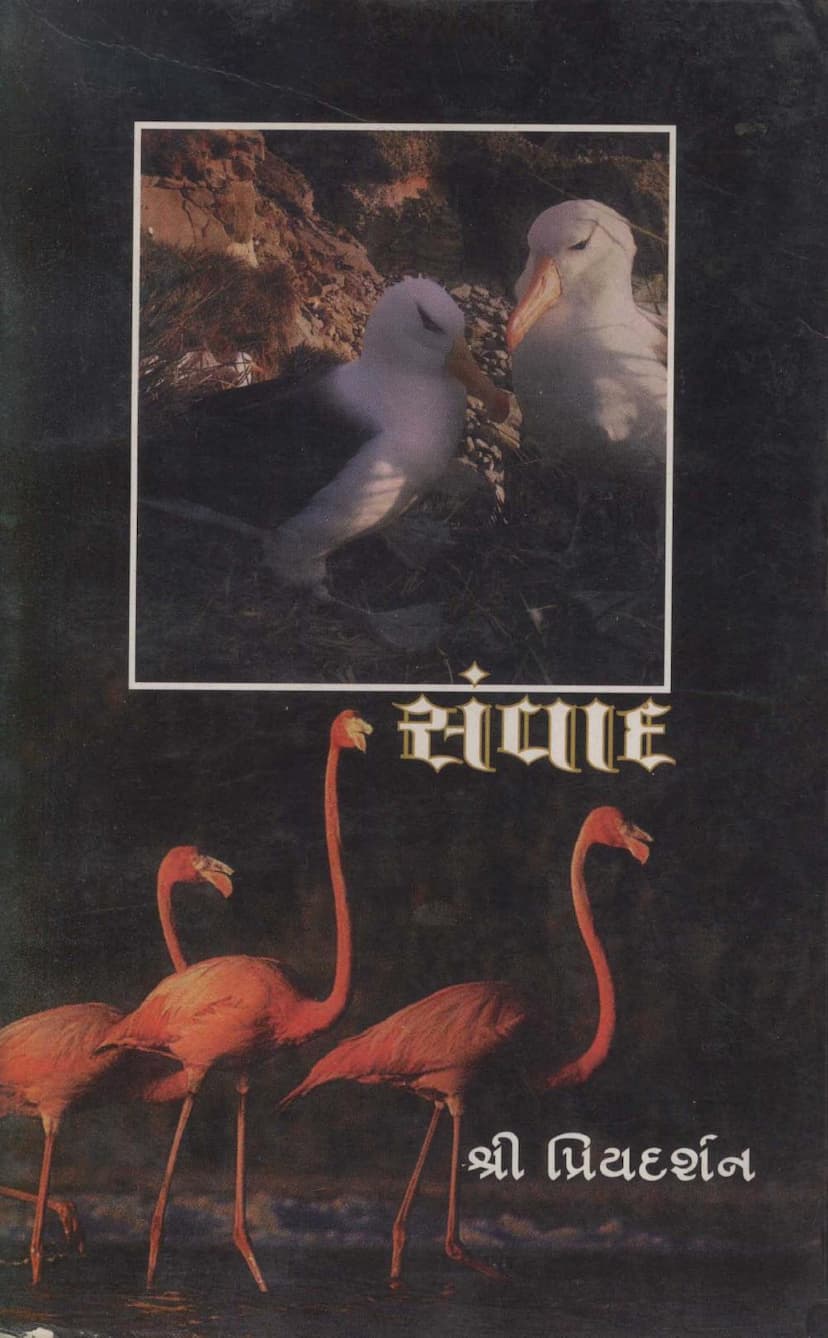Samvada
Added to library: September 2, 2025

Summary
This document is the introduction and table of contents for the Jain text titled "Samvada" (Dialogue), authored by Bhadraguptasuri and published by Vishvakalyan Prakashan Trust, Mehsana. The text, translated and compiled by Bhadrabahuvijay, is presented as a collection of dialogues and discourses on Jain principles and life philosophy.
Key Highlights from the Introductory Sections:
- Title: Samvada (Dialogue)
- Author: Bhadraguptasuri (also referred to as Shri Priyadarshan, Bayadivijay Lokesharmalgupt Surishwarji Maharaj)
- Compiler/Editor: Bhadrabahuvijay
- Publisher: Shri Vishvakalyan Prakashan Trust, Kamboinagar, Mehsana.
- First Publication: March 1999
- Motto: "Walk through life with loving dialogue, without arguments, without disputes, without disagreements." (Page 2)
Key Themes and Content (based on the Table of Contents and initial pages):
The book is structured as a series of dialogues, often framed as questions from a disciple and answers from the Guru (Bhadraguptasuri). The topics covered are profound and delve into the core tenets of Jainism and practical life wisdom. Here's a summary of the themes presented in the table of contents:
- The Best Way (Pathya): Religion (Dharma) is presented as the ultimate path for spiritual and physical well-being.
- What is Pure? A pure mind is considered the highest purity.
- What is Suffering (Duhkha)? Dissatisfaction (Asantosh) is identified as the root cause of suffering.
- Who is Wise (Pandit)? A person with discernment (Viveki).
- What is Fleeting (Taral)? Youth and lifespan are described as transient.
- What is a Thorn (Kanto)? Hidden sins are the sharpest thorns.
- What is Lamentable (Shachaniya)? Miserliness (Kripanta) is regrettable.
- What is Praiseworthy (Prashansaniya)? Generosity (Udarata) is commendable.
- What is the Wish-Fulfilling Tree (Kalpvali)? Knowledge imparted to a worthy disciple.
- What is the Inexhaustible Banyan Tree (Akshaya Vatavruksha)? Giving to a worthy recipient (Supatra Dan).
- What is Worth Accepting (Upadeya)? The Guru's word.
- Who Destroys All Virtues (Sarvgunnashak)? Greed (Lobh).
- Who is the Enemy (Shatru)? Desire/Lust (Kam).
- What is the Best Strength (Shreshth Bal)? Courage/Fortitude (Dhairya).
- What is the Means to Success (Siddhi)? Austerity/Penance (Tapashcharya).
- Who is Fearless (Abhay)? One who is detached (Vairagi).
- Who is the Visible Goddess (Pratyaksh Devi)? The Mother.
- From Where Does Wisdom Come (Buddhi)? From serving the elders (Vriddhoseva).
- Who are the Truly Old/Wise (Vriddh)? Those who know the essence of Dharma (Dharmatatvajna).
- What is the Fortune of the Body (Deh ka Saubhagya)? Health (Arogya).
- What is Death (Mrityu)? Lack of awareness/vigilance (Avadhanrahitatva).
- What is Affection (Sneh)? Good intention/goodwill (Sadbhav).
- What is Friendship (Maitri)? Trust (Vishwas).
- Who is Mute (Munga)? One who does not speak pleasant things (Apriya Bhashi).
- Who is Deaf (Bahra)? One who does not hear the cries of the suffering.
- Who is Blind (Andha)? One who does wrong deeds (Akarya Karnar).
- Who is a Man (Purush)? One who has controlled his senses (Jitendriya).
- Who is Happy (Sukhi)? One who is free from desire (Trushna-rahit).
- What are the Three Fires (Agni)? Attachment (Rag), Aversion (Dvesh), Delusion (Moh).
- Who are the Unhappy (Dukhi)? The six described (likely referring to specific categories of suffering).
- What is the Inexhaustible Treasure (Akshaya Bhandar)? Good conduct (Sadachar).
- What is Supreme Fame (Param Yash)? Good conduct (Sadachar).
- Whom to Please? One's own soul and the true Guru.
- From What Does Conflict and Destruction Arise? From accumulation/possessiveness (Parigraha).
- Who is Fearless (Nirbhay)? The awakened one (Jagrut).
- Who is a Seeker of Liberation (Mumukshu)? One detached from the body.
- What is the Cause of Bondage (Bandhan ka Karan)? Attachment/Possessiveness (Mamatva).
- What is the Essence (Tattva)? A pure mind (Amal Man).
- Who Does Not Know Themselves? The foolish intellect (Mudh Buddhi).
- In What is Happiness Found? In the renunciation of all possessions (Sarva Sang Tyag).
- To Whom is Samadhi Attained? To the one without affection/attachment (Nihsneha).
- Who is Great (Mahan)? One who works for the welfare of the universe (Vishvopkari).
- What is the Root of Wealth (Shri ka Mul)? Freedom from excitement/agitation (Anudveg).
The Core Message:
The book emphasizes the importance of dialogue (Samvada) as a way of life, fostering understanding and harmony. It highlights the profound wisdom of the author, Acharya Shri Vijay Bhadra Guptasurishwarji Maharaj, who, despite suffering from ill health, continued to create literature. The underlying theme throughout the discourse seems to be about inner peace, self-awareness, and living a life guided by principles of dharma, detachment, and virtuous conduct, all explored through insightful dialogues. The work aims to guide readers towards a more meaningful and fulfilling life, emphasizing the path of spirituality and self-realization.